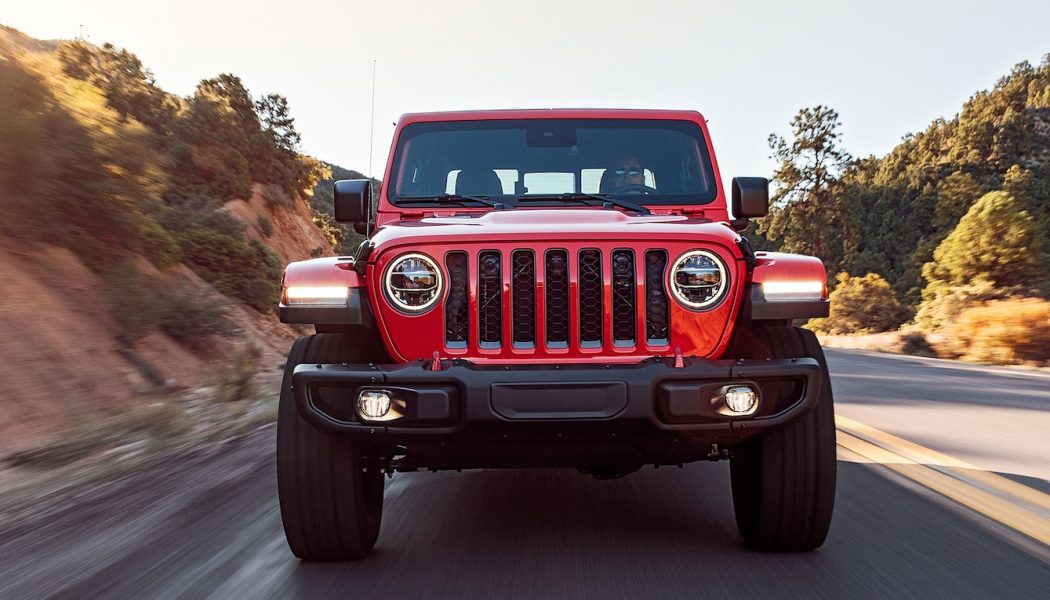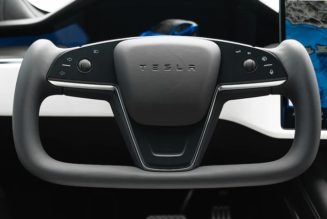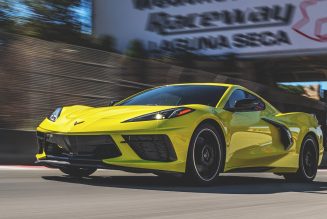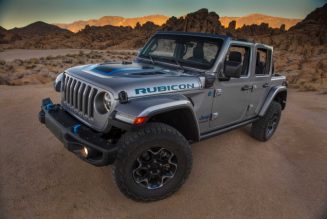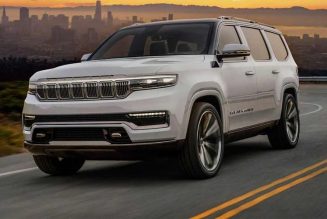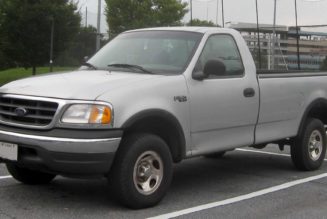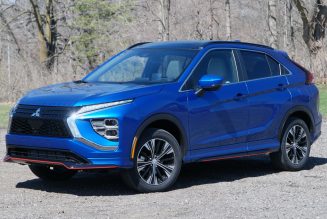No one would blame you for thinking adding a diesel engine to a vehicle’s lineup is a bad idea these days—not after VW’s emissions-cheating scandal. Although doing so really isn’t a great idea for passenger cars given the additional costs and lack of consumer appetite, it remains an excellent idea for trucks and their work-centric missions that often take them off pavement. For their part, Jeep executives like to say the second question they heard after, “Will you make a Jeep truck?” was, “Will it have a diesel?” The 2019 launch of the Jeep Gladiator answered the former in the affirmative, and the EcoDiesel variant does the same for the latter. And it’s a better truck for it.
Diesel Torque FTW
The formula is exactly what you expect it to be: Jeep has installed the corporate 3.0-liter turbocharged diesel V-6 available in the Wrangler and Ram 1500 in the Gladiator’s engine bay, along with a toughened-up version of the familiar eight-speed automatic transmission. As elsewhere, the V-6 makes 260 horsepower and 442 lb-ft of torque, just a little less power than the standard gas-powered V-6 and a whole lot more twist.
As it does in the Wrangler, the EcoDiesel spins a 3.73:1 rear axle on every trim level, including Rubicon. (The desert-running Mojave will not offer the diesel engine.) With all that low-end torque, the more aggressive 4.10:1 rear end isn’t needed for rock crawling, and the taller ratio improves fuel economy to a best-in-class 22/28/24 mpg city/highway/combined. That’s better than every other midsize truck, if only slightly, and it has the most torque, too. Horsepower is at the bottom end of the class overall, but not by much.
Torque is more important with trucks, of course, and one of the non-diesel Gladiator’s shortcomings is its distinct lack of low-end grunt with the gas V-6. That engine will make power if you rev it out, but people don’t drive like that, especially in pickups. The EcoDiesel fixes the issue. It makes its full fusillade of torque starting at 1,400 rpm and keeps it going through 2,800 rpm, by which point the horsepower is coming online ahead of its own 3,600-rpm peak.
Driving the Glad Diesel Will Make You Glad
The difference is very obvious behind the wheel. Our test vehicle was a Rubicon model, which has the largest, heaviest tires and the highest curb weight of all Gladiators, putting the most strain on the diesel (and dropping EPA city and highway by 1 mpg each). No sweat. The Gladiator diesel lurches off the line and pulls cleanly through its limited rev range with far more authority than the gas engine. Because this ain’t no sports car, the throttle calibration isn’t aggressive. You need to put pedal to metal if you want the truck to jump, but when you do, it does. At any speed, up a steep hill, on the highway—you name the place, it’s happy to oblige, and there’s no dropping four gears and redlining the engine like the gasser. In fact, other than a bit of clatter at idle and under wide-open throttle, the engine is extremely quiet. Of course, the Gladiator itself has a good deal of interior and road noise, helping to mask any diesel uncouthness.
Apropos of nothing, it also does great burnouts.
Going the other way, diesel engines’ high compression ratios mean you don’t have to work the brakes much going downhill. Driving down an 8 percent grade, simply lifting off the throttle maintained a constant speed for miles.
EcoDiesel = Off-Road Champ
Off-road, the diesel is a delight. As noted, diesels are king in the dirt, and the EcoDiesel Gladiator practically idles over everything in its path. Where the gas engine often needs to be revved and made to work hard to climb over things, the diesel barely even wakes up. Using the hill descent control and low gears, you can tip-toe down a steep path at as little as 0.6 mph. The Gladiator already felt unstoppable off-road, and now it’s even more formidable when the asphalt ends.
We’ll get our test equipment strapped to a diesel Gladiator as soon as possible, but in the meantime, we can make an educated guess on its performance. A Wrangler with the same diesel was only slightly slower to 60 mph than the one with the gas V-6, so it’s likely the diesel Gladiator will perform similarly. If so, it’ll hit 60 mph in the low–8-second range while also feeling way happier doing it.
Jeep’s Diesel Truck Tows and Hauls Less
There are some trade-offs, though. Maximum towing capacity on diesel models is 6,500 pounds, down from 7,650 with the gas engine. This is due entirely, Jeep says, to cooling, not engine capability. Tow ratings are often dependent on cooling because engines are working much harder than normal and creating way more heat. Without messing with the Gladiator’s trademark seven-slot grille and its rock-ready steel bumper, engineers just couldn’t get any more air to the radiator and intercooler, so maximum towing capacity had to be limited.
In a similar sense, payload is a function of vehicle weight. Per Jeep’s charts, the diesel adds anywhere from 260 to 365 pounds to the Gladiator’s curb weight, and as a result, payload capacity suffers. A gas-powered Gladiator can accommodate 1,700 pounds, right up at the top of the class, but the diesel tops out at 1,325 for the lightest Sport, 1,075 for the Rubicon.
But the Gladiator Diesel Does Offer Huge Range
On the other hand, both fuel economy and range are up, theoretically letting you go more than 500 miles between pit stops. As with the diesel Wrangler, Jeep engineers had to shrink the fuel tank to make room for the urea tank that feeds the emissions-scrubbing hardware. Do the math with fuel prices and economy, and you’ll see the value proposition works out to be about the same as the diesel Wrangler‘s, meaning you’ll need to drive your EcoDiesel Gladiator more than 300,000 miles to save enough money on fuel to offset the $4,000 cost of the engine. (Choosing the engine also requires a $2,000 outlay to get the “standard” eight-speed automatic, so the true charge is $6,000—which means adding another 100,000 miles to balance the books.)
And that’s the rub. The Gladiator already carries the highest starting price in the class at $35,040, and the starter diesel rings in at $41,040. That money will put you in a full-size truck with a diesel, and very nearly into a heavy-duty truck with a diesel. Another item of note is you can’t get the diesel with the manual transmission. As with the Wrangler lineup, too few people are expected to purchase either the diesel engine or the manual transmission on their own to make a case for pairing them up.
If you’re going to buy a Gladiator anyway, though, it’s probably worth ponying up for the diesel. Six grand is an expensive leap, but the truck drives so much better both on- and off-road that it feels fully justified. We’ll have a better understanding of the case the 2021 Jeep Gladiator EcoDiesel makes for itself once we’ve loaded up the bed and hooked up a trailer, but so far, so very good.
| 2021 Jeep Gladiator EcoDiesel | |
| BASE PRICE | $41,040 |
| LAYOUT | Front-engine, 4WD, 5-pass, 4-door truck |
| ENGINE | 3.0L/260-hp/442-lb-ft turbodiesel DOHC 24-valve V-6 |
| TRANSMISSION | 8-speed automatic |
| CURB WEIGHT | 4,700 lb (mfr) |
| WHEELBASE | 137.3 in |
| L x W x H | 218.0 x 73.8 x 73.1-75.0 in |
| 0-60 MPH | 8.0-8.2 sec (MT est) |
| EPA FUEL ECON | 21-22/27-28/24 mpg |
| ENERGY CONSUMPTION, CITY/HWY | 160-171/125-135 kWh/100 miles |
| CO2 EMISSIONS, COMB | 0.83-0.91 lb/mile |
| ON SALE | Currently |
